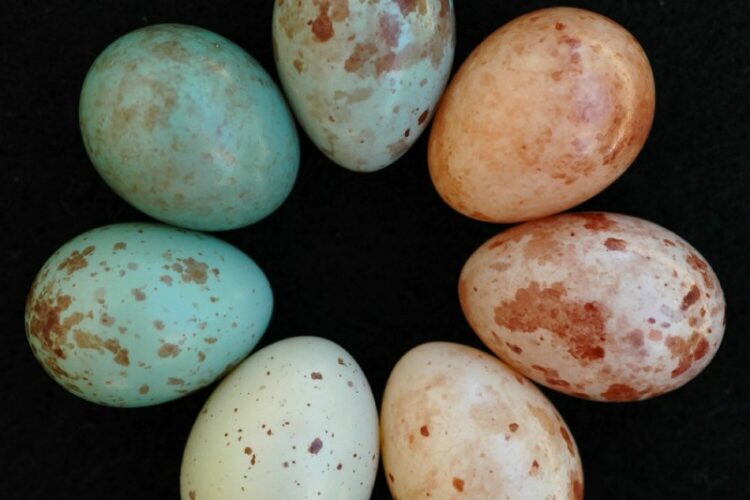As numerous people plan to open up their Easter eggs, researchers have addressed one of nature’s greatest lawbreaker cases, an egg fabrication embarrassment 2,000,000 years really taking shape. Their discoveries recommend that the survivors of this misrepresentation may now acquire the advantage.
All over the planet, many birds evade the expenses of being a parent by laying their eggs in the home of different species. This way of life, named “brood parasitism”, enjoys many benefits yet, in addition, presents difficulties, for example, how to persuade different species to acknowledge an unfamiliar egg. Many brood parasites accomplish this by mirroring the varieties and examples of their host’s eggs, however some adventure the consideration of a few different host animal categories whose eggs all appear to be unique.
How then, at that point, could a solitary brood-parasitic bird species at any point all the while imitating the eggs of a few different bird animal groups to fool them into raising their young? What’s more, how do these parasitic counterfeiters give this capacity to their young regardless of interbreeding between birds raised by various hosts?
These inquiries have been confounding researchers for over a century. Presently hereditary exploration by a worldwide group driven by Professor Claire Spottiswoode from the University of Cambridge’s Department of Zoology and the FitzPatrick Institute of African Ornithology, University of Cape Town; and Professor Michael Sorenson at Boston University, has made a significant forward leap, and their discoveries might be awful information for the egg falsifiers.
The review, distributed today in PNAS, focussed on the hereditary qualities of egg mimicry in the cuckoo finch, an animal type that takes on a brood-parasitic way of life and takes advantage of numerous types of lark across Africa. The examination uncovers that female cuckoo finches acquire their capacity to emulate the presence of their hosts’ eggs from their moms, by means of the female-explicit W chromosome (comparable to the male-explicit Y chromosome in people).
Such ‘maternal legacy’ permits cuckoo finches to avoid the gamble of acquiring some unacceptable mimicry qualities from a dad raised by an alternate host, thus has permitted unmistakable ancestries of cuckoo finch females to develop particular egg mimicry of a few different host animal varieties. Such mimicry hoodwinks have guardians into tolerating a parasitic egg as their own as opposed to tossing it out of the home, thus has been vital to the outcome of these African birds.
In any case, the specialists accept that this long-laid out ‘hereditary engineering’ of maternal legacy might return to cause major problems for the cuckoo finches. Dr. Spottiswoode said: “In this specific coevolutionary weapons contest between species, normal determination has made a blade that cuts both ways.
“While maternal legacy has permitted cuckoo finches to take advantage of various host species, it’s probably going to ease back their capacity to develop counter-transformations as their hosts develop new protections. Specifically, parasites face an overwhelming test since some host species have consequently advanced an amazing variety of egg tone and example ‘marks’, that assist has with recognizing their own eggs from parasitic impersonates.”
The field information was gathered at a review site in southern Zambia along with Dr. Wenfei Tong and Dr. Gabriel Jamie from the University of Cambridge and Ailsa Green, Silky Hamama, Ian Taylor, and Collins Moya from the encompassing local area in Zambia. Cuckoo finches in this space stunt four distinct types of grass-songbird overwhelming everything in the vicinity: assuming host guardians neglect to identify and eliminate a parasitic egg in their home, the youthful cuckoo finch ordinarily outcompetes the hosts’ own hatchlings, which before long starve to death.
The group gathered DNA tests from 196 cuckoo finches from 141 homes having a place with the four grass-songbird species and concentrated on the greater part by sequencing a large number of short portions across their genomes.
In their fightback against the falsifiers, grass-larks have become gifted quality regulators, dismissing eggs that vary from their own in variety and example, and each of the four species has developed the capacity to store one of a kind ‘marks’ onto their own eggs to improve their location of gatecrashers. Brownish flanked prints, for instance, lay eggs with blue, white, red, or olive-green foundations overlaid with an assortment of examples.
Cuckoo finches have answered not just by advancing mimicry of the eggs of their few host species, yet have likewise additionally broadened to copy at minimum a portion of the mark-like variety found in the eggs of various females inside each host species. The group laid out that the two capacities are given over through maternal legacy, at last approving a theory initially proposed in 1933 by ornithologists considering how the normal cuckoo in Europe was likewise ready to imitate the eggs of a few different host animal types.
Disclaimer: The views, suggestions, and opinions expressed here are the sole responsibility of the experts. No Unique Analyst journalist was involved in the writing and production of this article.

